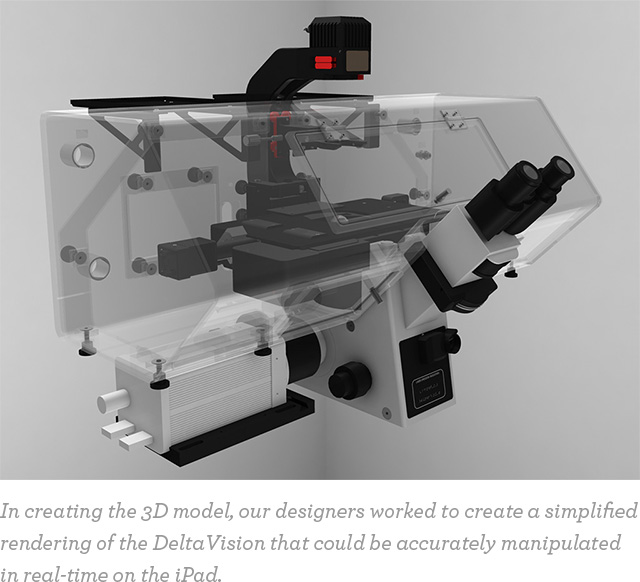
A Ghost in the Machine
The problem with any type of technology show is that the "show" is generally displaying the equipment, rather than what the equipment can actually do. Aisle after aisle of this stuff can leave you feeling simultaneously overwhelmed and a tiny bit bored. It is hard to imagine the creative possibilities when actually using any particular piece of equipment. You just stand there, looking at an unmoving, piece of metal and plastic. If you were allowed to touch it, which you probably aren't, you probably wouldn't know what to do with it anyway. That takes training. The result is that you have no idea what is inside, or what this thing can really do. Scientists refer to this as a "black box" problem. It is made worse when the equipment on show is literally "a black box." Management calls this a sales problem. This is the problem that GE Healthcare Life Sciences had: their product looks exactly like a black box. And unless you are a crash scene investigator, a black box is not that exciting on its own.

The Client/Product
General Electric is a pretty massive company that happens to be good at a whole lot of things. GE is the fourth largest company in the world – if it was a country its GNP would be bigger than New Zealand's. Across its nine divisions it produces thousands of products. We are guessing many of which, are probably "black boxes" to the rest of us.
GE's DeltaVision is a high-resolution microscope optimized for low-light imaging of live cells. In other words it takes really great images of really small things in the dark. Hence the black box.
When GE first came to us they wanted an interactive app that would illustrate the unique features and advanced imaging capabilities of their microscope.
An app is quite good for that purpose... But we felt that we could make something better. Something that went beyond a mere flashy presentation on screen.
The initial challenge was to create an experience that would interactively tie the on screen content to the actual object in front of you in a media rich way. We wanted to create a visceral experience; engaging prospective clients on multiple levels, while providing sufficient detailed information to pique their interest, leading to a request for further information. Preferably right there on the trade show floor. Industry veterans would say: "That is how sales are made."
From the start, we knew that we could do this better than anyone. Arthur C. Clarke's Second Law:
The only way of discovering the limits of the possible is to venture a little way past them into the impossible.
The plan was to make a custom Augmented Reality (AR) app for the iPad, to create an interactive experience linking app and the product itself. Utilizing the iPad's camera as a function the user would be moving the Camera over the big black boxy microscope, the app would then recognize the shape and orientation of the object, and maps labels and interactive buttons directly onto the image of the microscope on the screen creating a sensational mind-body experience that even a Cartesian dualist would have trouble denying …
approximate number of polygons in the 3D AR model
No Black Box Required
Plans change. As our discussions progressed the advantages of removing the large and expensive to ship, microscope from the App equation became increasingly obvious. The marketing reach potential would immediately grow, from a few trade shows, to every sales call, and beyond that to every prospective customer's iPad as well. Removing the physical black box would enable the GE sales team to engage and educate prospects in ways that went beyond existing methods, and mindsets.
By virtualizing the product and superimposing it in an augmented reality environment, we could address challenges related to product sales, brand building, as well as marketing expenses and logistics.
approximate number of polygons cleaned up from the original CAD model from client

What we did
We developed the AR app, so that it would recognize a GE promo item as the target and superimposed a translucent, interactive 3D model of the microscope on top of it. The target itself is arbitrary, it only functions as a real world anchor for the AR experience. Once the software makes the link, the model appears on the screen like a ghostly image appearing out of nowhere, projected in 3D right in front of you. The user can maneuver to see different parts of the model, interact and get information about all the features right then and there by clicking on the actual model.
The result was a mixture of technology and magic.
AR beyond gimmickry
Augmented Reality is an emerging field, and like most things, at this point there is more fluff than there is substance out there. Don't be fooled though, when carefully conceived and developed, an AR application is a powerful tool to achieve a deeper level of engagement, if you pardon the pun. By providing an engaging interactive experience, we can leverage discovery based and constructivist learning models to increase the cognitive connection to the product features and the brand. This is especially useful when the experience is either filling in unknown or not visible information, or juxtaposing and combining information that is not ordinarily associated with the current physical perspective. From here it is just a "hop, skip and a jump" to theories of embodied learning and situated cognition. Academically inclined folk will be excited about all this, and we are too. What we do know is that the GE DeltaVision AR app, really hit the target.
"Any sufficiently advanced technology is indistinguishable from magic."
Arthur C. Clarke's Third Law